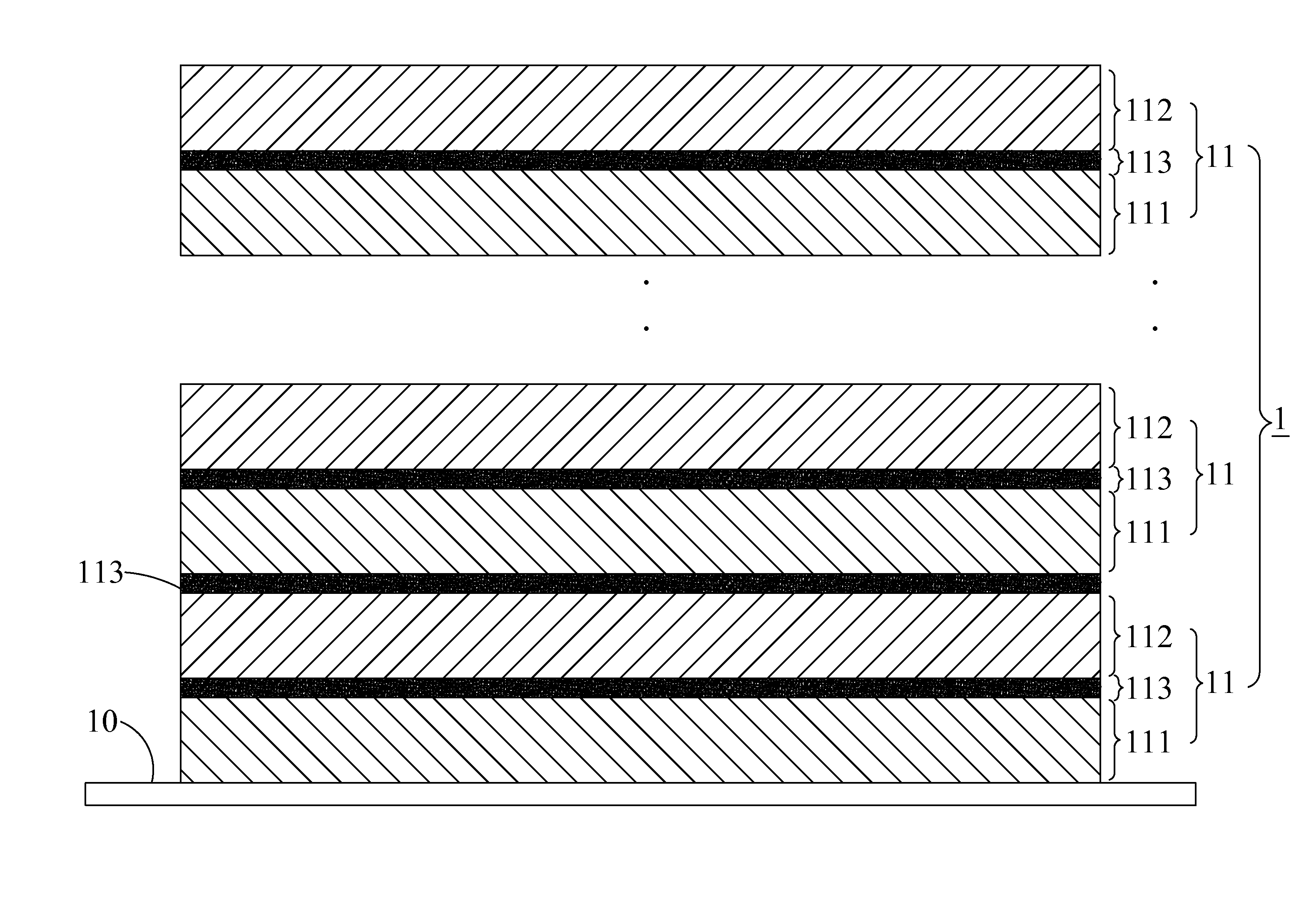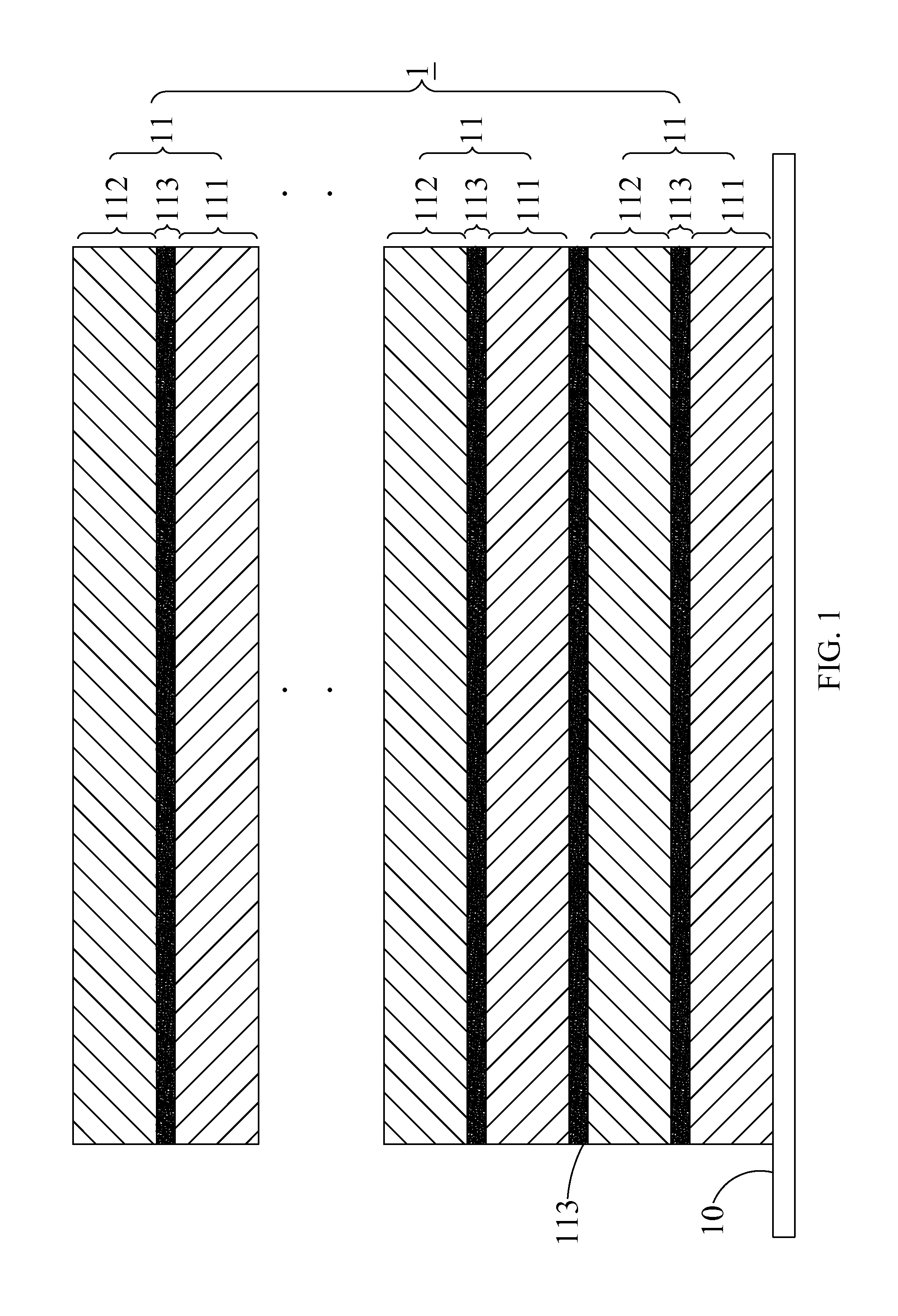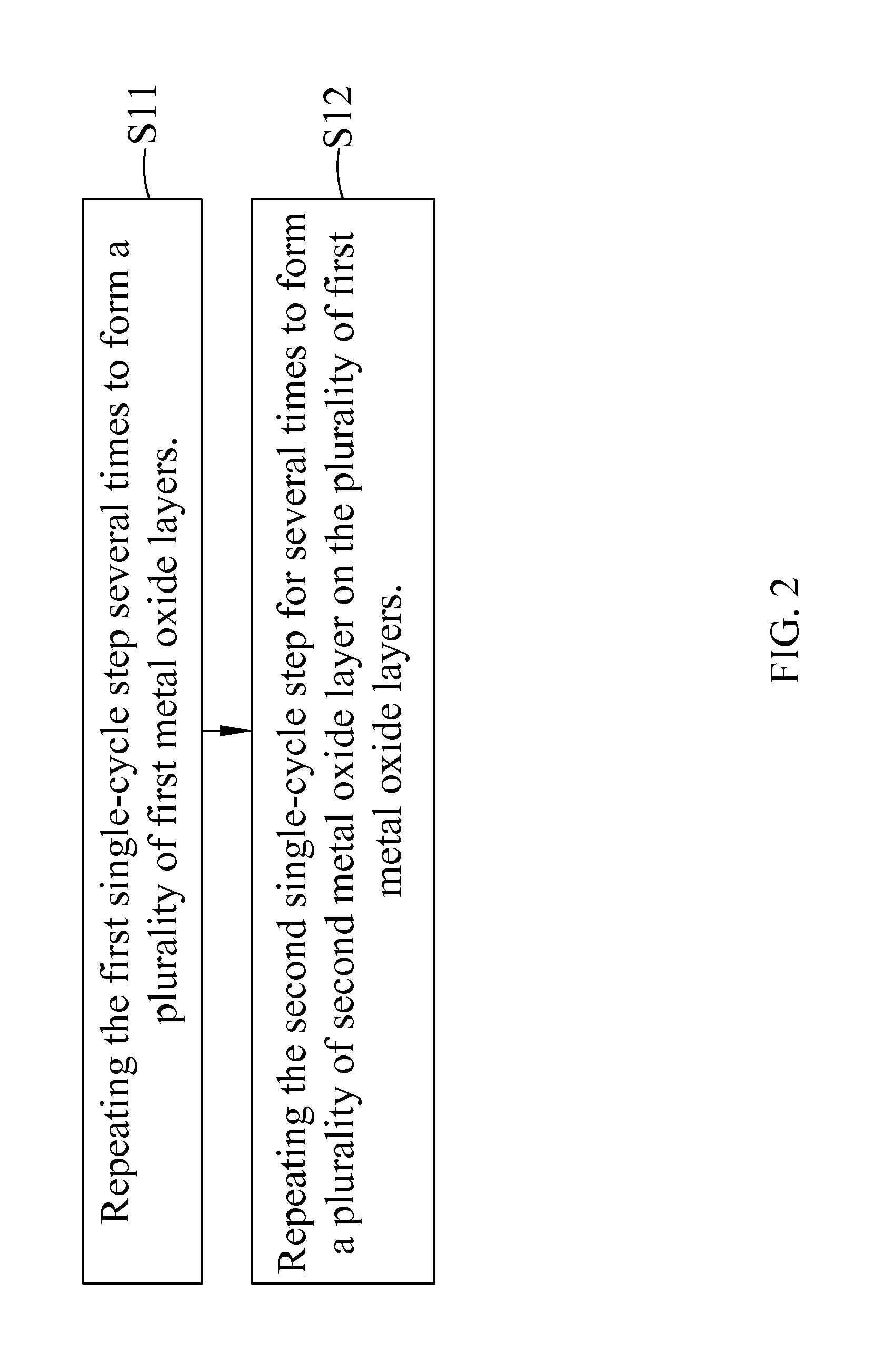Nano-laminated film with transparent conductive property and water-vapor resistance function and method thereof
a technology of conductive property and water-vapor resistance, applied in the field of nano-laminated films, can solve the problems of easy damage to electronic devices, limited glass packaging method, etc., and achieve the effect of improving water vapor transmission rate, less defects, and prolonging the service life of electronic devices
- Summary
- Abstract
- Description
- Claims
- Application Information
AI Technical Summary
Benefits of technology
Problems solved by technology
Method used
Image
Examples
Embodiment Construction
[0048]The foregoing and other objectives, technical characteristics and advantages of the present invention will become apparent with the detailed description of preferred embodiments accompanied with related drawings as follows.
[0049]With reference to FIG. 1 for a schematic view of a nano-laminated film in accordance with a preferred embodiment of the present invention, the nano-laminated film 1 is formed on a surface of a substrate 10 of a package device, and a nanocomposite layer 11 is laminated repeatedly to achieve the packaging effect. Each nanocomposite layer 11 is comprised of a plurality of first metal oxide layers 111 and a plurality of second metal oxide layers 112, and the plurality of second metal oxide layers 112 is formed on the plurality of first metal oxide layers 111 respectively.
[0050]Wherein, a contact interface is formed between the plurality of first metal oxide layers 111 and the plurality of second metal oxide layers 112 in the structure of each nanocomposite...
PUM
| Property | Measurement | Unit |
|---|---|---|
| total thickness | aaaaa | aaaaa |
| density | aaaaa | aaaaa |
| temperature | aaaaa | aaaaa |
Abstract
Description
Claims
Application Information
 Login to View More
Login to View More - R&D
- Intellectual Property
- Life Sciences
- Materials
- Tech Scout
- Unparalleled Data Quality
- Higher Quality Content
- 60% Fewer Hallucinations
Browse by: Latest US Patents, China's latest patents, Technical Efficacy Thesaurus, Application Domain, Technology Topic, Popular Technical Reports.
© 2025 PatSnap. All rights reserved.Legal|Privacy policy|Modern Slavery Act Transparency Statement|Sitemap|About US| Contact US: help@patsnap.com



